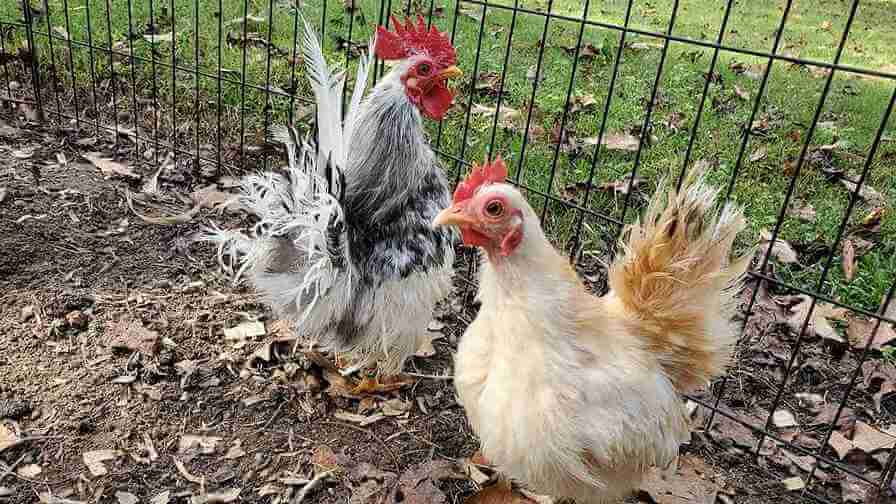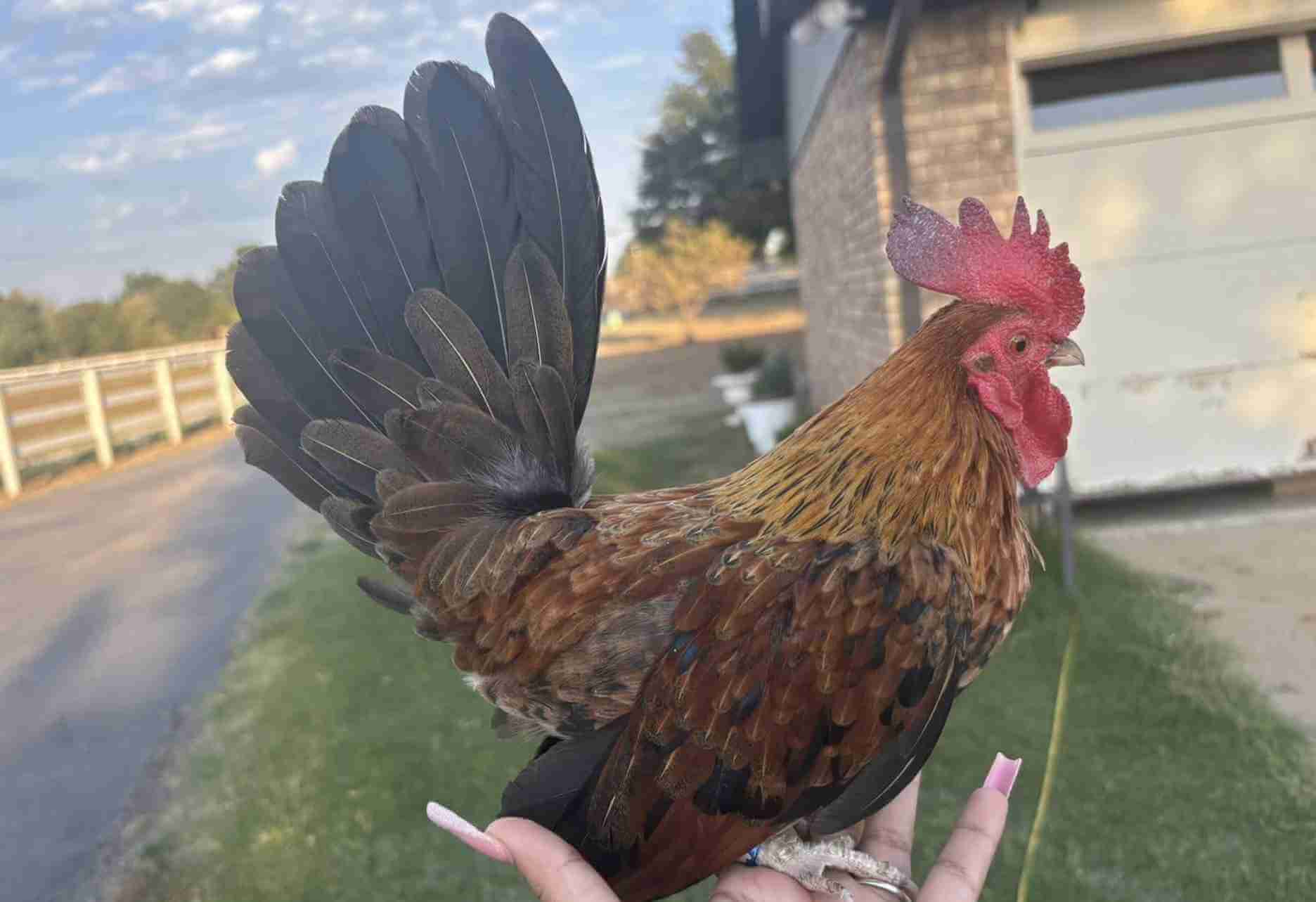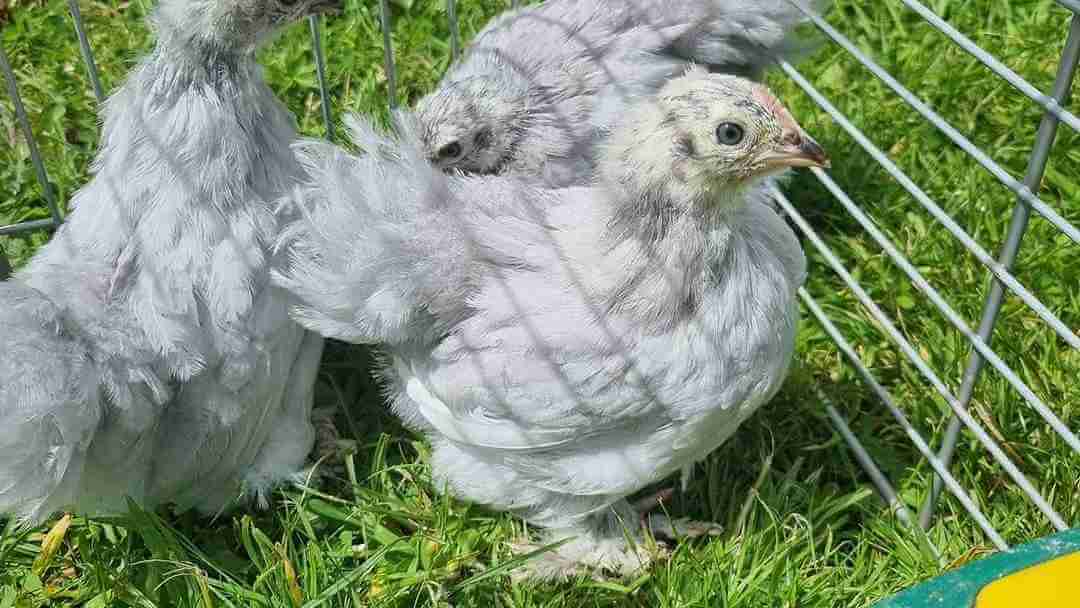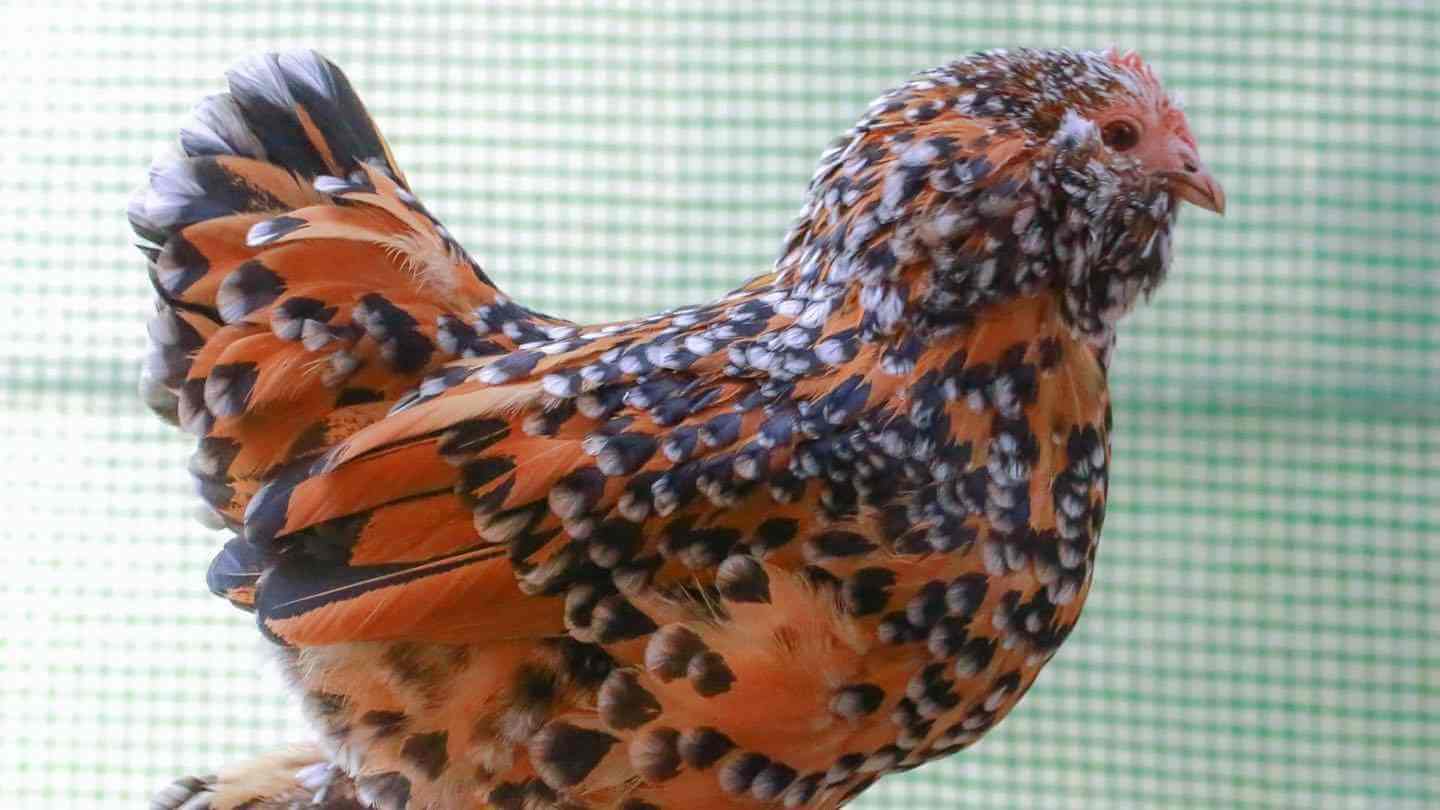If you want to raise chickens, especially a pet chicken but have little space, don’t worry! There are miniature chicken breeds perfect for small yards or urban homes.
Miniature chickens, also known as bantams, are smaller than regular chickens, but they still lay eggs you can sell or use them for breakfast and make great pets.
These tiny chicken breeds need less space and are easier to handle, which is why these are a perfect choice for beginners.
But how do you know which breed to pick? Keep reading to find out which miniature chickens are the best for you.
What Are Miniature Chickens?
Miniature chickens are small versions of chickens. They might be tiny, but they are just like normal chickens in many ways.
They lay eggs but fewer and are a bit smaller. People like them because they don’t need much space, making them great for urban areas or small backyards.
Miniature chicken breeds are usually friendly and easy to take care of, which is perfect for someone new to raising chickens.
What’s A Bantam Chicken?
Bantam chickens are what small chickens are called, and they are a great choice for those who don’t have much space and want a pet chicken.
What’s really nice about bantams is that they are generally easy to handle and very friendly, making them a good option for beginners and families.
Because they don’t need a lot of room, bantams are perfect for small yards and urban living. Miniature and bantam are the same type of chickens.
Why Miniature Chickens?
Miniature chickens, or bantams, are amazing because they fit perfectly into small spaces. If you live in a city or have a tiny backyard, these smallest chicken breeds are just right for you.
Here are reasons why miniature chicken bree:
- These are very friendly.
- Tiny rooster breeds are usually less noisy than larger roosters.
- Required less space.
- Provide some tiny or bantam eggs.
- Easy to care for.
- Great for kids.
- Low maintenance.
Top 10 smallest chicken breeds
Here are some of the best miniature chicken breeds that are known for being friendly, easy to handle, and require little maintenance, which makes them perfect pets.
Let’s see miniature chicken breeds with pictures:
Serama: The World’s Smallest Chicken Breed

The Serama chicken breed traces back to Malaysia. It was developed by a breeder named Wee Yean Een, who started crossbreeding small native chickens in the 1970s.
His goal was to create the smallest possible chickens with a friendly nature. Named after a king from Malaysian folklore, the Serama quickly gained popularity for their tiny size.
Serama chickens are tiny, and they’re often called mini chicken breeds because they are some of the smallest chickens you can find.
A fully grown Serama can weigh around 540 grams, making them super light and the world’s smallest chicken breed.
Seramas are known for their big personalities. They are friendly and enjoy being around people, which makes them great pets.
Dutch Bantam:

The Dutch Bantam chicken breed comes to us from the Netherlands and has been around for centuries and was originally bred by farmers.
The Dutch Bantam is a really cute and tiny chicken breed that’s the perfect option for new or people who have little space.
Their weight is around 550 grams, which makes them one of the smallest chicken breeds you can own.
These small chickens may be tiny, but they have colorful personalities. Dutch Bantams are known for being friendly and playful personalities.
These chickens are pretty active and love to explore their surroundings and will bring lots of joy.
Sebright:

The Sebright chicken breed was created in England at the beginning of the 19th century by Sir John Saunders Sebright, who was passionate about breeding small, distinctive chickens.
Sir John aimed to develop a miniature chicken that was beautiful and had intricate feather patterns.
The Sebright chicken is a miniature version of the chicken breed known for its beauty and small size.
As a type of miniature bantam chicken breed, Sebrights are among the smaller chickens available, with a weight of around 620 grams.
These chickens are not just small; they’re also very attractive, with shimmering gold or silver feathers that look like lace.
They’re active birds and enjoy running around and exploring their homes. This makes them fun to watch and interact with if you have a limited space or a small yard.
Pekin Bantam:

Pekin Bantam chickens originating in China. They were first brought to Europe in the mid-19th century by British soldiers returning from the Summer Palace in Beijing, which helped them earn the name “Pekin” after the city’s old name, Peking.
These small yet robust chickens quickly gained popularity in England and beyond, not only for their unique and delightful feathering but also for their friendly demeanor.
Pekin Bantams are also a type of small chicken often known for their friendly nature and fluffy appearance. These little chickens weigh around 680 grams.
Pekin Bantams have compact sizes making them ideal pets for backyard farms. Pekin Bantams are hardy and can be great layers, capable of producing a fair number of eggs each year.
Sultan Bantam:

Sultan Bantam, also belonging to the category of Miniature Chicken Breeds, originated in Turkey, where they were once admired in the gardens of Ottoman sultans.
The breed was introduced to Europe in the mid-19th century and quickly gained popularity among poultry keepers.
The Sultan Bantam Chicken is one of the best miniature chicken breeds out there. These small chickens are known for their beautiful feathers and striking appearance.
On average, a Sultan Bantam Chicken weighs around 740 grams, making them lightweight and easy to care for.
They have a friendly nature, which makes them great pets for chicken enthusiasts, and is often admired for their unique looks, including feathery crests and fluffy tails.
Polish Bantam:

Polish Bantam originated from Europe, these chickens were first mentioned in writings from the 16th century.
Although the exact origin is unclear, it is believed they were developed from larger fowls brought from Asia.
Polish Bantam is a type of tiny chicken that’s almost like a miniature version of regular chicken breeds.
These adorable little chickens are known for their distinctive looks and their small size weight is around 740 grams.
Belgian D’Uccle:

The Belgian D’Uccle chicken breed was developed in the early 20th century by a man named Michel Van Gelder in the town of Uccle, Belgium.
Van Gelder succeeded by crossing local bantams with bearded varieties like the Antwerp Belgian.
The result was a charming, ornamental chicken known for its feathered legs and distinctive beard.
The Belgian D’Uccle chicken is loved for its size and beauty. This chicken weighs around 740 grams. It belongs to miniature bantam chicken breeds.
There are many types of small chicken breeds, but the Belgian D’Uccle stands out with its unique feathered legs and friendly nature.
These chickens are not just pretty to look at; they are also gentle and enjoy being around people, which makes them popular pets aside from their unique appearance.
Cochin Bantam:

These tiny chicken breed’s history traces back to the 19th century when they were first discovered in China.
Cochin Bantams are also popular for their small size, with their weight being around 800 grams, which is about the same as a large book.
These friendly little birds have fluffy feathers all over their bodies, including on their legs and feet, giving them a distinct and cuddly appearance somehow like Pekin or Blue Star.
Cochin Bantams are known for their calm and gentle nature, making them great pets for families. They also come in many different colors, which make them a beautiful addition to any backyard.
Silkie Bantam:

The Silkie Bantam is one of the most intriguing miniature chicken breeds weighing around 1 kg, known for its fluffy plumage that feels like silk or fur.
Originating in Asia, the breed was first recorded by Marco Polo in the 13th century during his travels to the Far East.
These chickens were introduced to the Western world around the 1800s and quickly gained popularity due to their unique features.
Unlike the average chicken breed, Silkies have five toes instead of the usual four, and they often display broody behavior, making them excellent mothers.
Over the years, their gentle nature and distinctive appearance have made them a favorite among poultry enthusiasts, particularly appreciated in backyard flocks and poultry shows.
Japanese Bantam:

Japanese bantam chickens are a charming type of miniature chickens known for their small size and elegant appearance.
Originating from Japan, these chickens have been around for centuries and were initially bred to be ornamental birds.
They are unique because, unlike other chickens, they remain small their entire lives, weighing around 1.3 kg.
Japanese bantams are known for their upright posture and graceful tails, which make them stand out.
Their friendly and curious nature makes them great companions for people who love to keep ornamental chickens.
Other Small Chicken Breed
Jere are some other smallest or miniature or bantam chicken breeds:
- Rosecomb Bantam
- Brahma Bantam
- Booted Bantam (Sabelpoot)
- Old English Game Bantams
- Nankin Bantam
- Cubalaya Bantam
- Appenzeller Spitzhauben Bantam
- Barbu D’Anvers (Belgian)
- Satin Chickens
Small Chicken Breeds For Eggs
Here are some small chicken breeds for eggs if you want eggs as a benefit from your miniature chicken breeds:
- Serama (around 4 eggs a week)
- Dutch Bantam (around 3 eggs a week)
- Sebright (around 2 eggs a week)
- Pekin Bantam (around 3 eggs a week)
- Sultan Bantam (around 1 egg a week)
- Polish Bantam (around 3 eggs a week)
- Belgian D’Uccle (around 3 eggs a week)
- Cochin Bantam (around 3 eggs a week)
- Silkie Bantam (around 2 eggs a week you can eat or sell)
- Japanese Bantam (around 3 eggs a week)
- Rosecomb Bantam (around 2 eggs a week)
- Brahma Bantam (around 2 eggs a week)
- Booted Bantam (Sabelpoot) (around 2 eggs a week)
- Old English Game Bantams (around 2 eggs a week)
- Nankin Bantam (around 2 eggs a week)
- Cubalaya Bantam (around 3 eggs a week)
- Appenzeller Spitzhauben Bantam (around 3 eggs a week)
- Barbu D’Anvers (Belgian) (around 2 eggs a week)
Caring for Miniature Chicken Breeds
Caring for your small pet chicken is essential here is the basic need you must provide for your chickens.
Housing:
Miniature chickens need a safe and cozy place to live. Their coop should be smaller than that of regular chickens, but it still needs to be secure from predators like foxes or raccoons.
It should be sturdy, with no gaps bigger than half an inch, and include a roof to protect it from the rain. Inside the coop, provide perches and nest boxes.
Ventilation is important, so the coop should have openings for fresh air, but these need to be covered with mesh to keep out pests.
Feeding:
Just like us, chickens need nutritious food to stay healthy and happy. They require feed that is specially made for chickens, which you can buy at a farm supply store.
This feed comes in pellets or crumbles, and it provides the essential vitamins and minerals they need.
Fresh water is also crucial and should be available at all times. Additionally, miniature chickens enjoy scratching around for bugs and plants.
Sometimes, you can even give them kitchen scraps like fruits and vegetables, but avoid feeding them anything too salty or sweet.
Health Care:
Keeping miniature chickens healthy involves regular checks for signs of illness or injuries. Look for changes in their behavior, such as being less active or not eating well, as these can indicate problems.
Their feathers should be smooth and clean. It’s important to keep their living area clean to prevent infections and parasites like mites or lice.
You might also need to take them for vaccinations or treatment if they become sick. Regular cleaning of their water and food containers will also help in keeping diseases at bay.
Daily Care:
Every day, you should check their water and food supplies to make sure they’re sufficient and clean. Spend some time watching them to ensure they are behaving normally.
Collecting eggs is another daily task, which can be quite rewarding. A quick clean-up of their living space every day will help them stay healthy and comfortable.
Introducing Miniature Chickens to a Larger Flock
Integrating miniature chickens into an existing flock of regular-sized chickens requires careful management to ensure a harmonious coexistence.
Start by allowing the new birds to acclimate to their surroundings by housing them nearby but separate from the bigger chickens.
This setup helps both groups become familiar with each other’s presence without direct contact.
Gradually introduce them by allowing supervised interactions in a neutral area where there is plenty of space and distractions like treats or feeders to prevent aggression.
Monitor these interactions closely for any signs of bullying or pecking, as the size difference can sometimes pose challenges.
Ensuring ample space, multiple feeding stations, and perches can greatly reduce tension and competition.
Over time and with patience, miniature chickens can successfully become part of a larger flock, bringing diversity and vitality to your poultry community.
Conclusion
In conclusion, choosing the right miniature chicken breeds is important for anyone starting a small urban farm or keeping a chicken as a pet.
These tiny chickens are perfect for limited spaces which are also low maintenance and require less attention.
They are not just cute, but they also give you fresh eggs. When you’re picking the best breeds, think about what you need and how much the miniature chicken price will be.
You can find these in hatcheries or stores that sell chickens online or offline but remember to go with a good reputation store or hatchery to avoid any scams and fraud.
Have you ever raised a miniature chicken breed?
FAQs
What breed of chicken stays small?
Bantam chickens are breeds that stay small.
What is a mini chicken called?
A mini chicken is called a Bantam or Miniature.
What are the little bitty chickens called?
Little bitty chickens are also known as Bantams or Miniature.
Which chickens lay the smallest eggs?
Bantam chickens lay the smallest eggs.
Are there miniature chickens?
Yes, there are miniature chickens called Bantams.
Hello! I’m Ibrahim, the owner and writer of this blog. I run a chicken farm with 160 chickens, and I’ve gained a lot of knowledge about raising and caring for them. Now, I want to share my insights and experiences with you to help you in chicken keeping.

